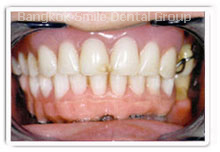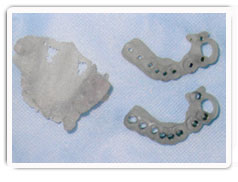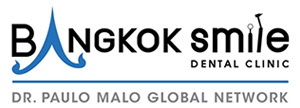
Implant placement
• How is the procedure done?
• Immediate implant loading (SAME DAY TEETH)
• Computer software and implant placement
How is the procedure done?
Presently, implant placement is commonly carried out in one stage. This method has simplified the procedure both for patients and dentist. However,not all patients are suitable for this method and the oral surgeon will advise you accordingly
Single-Stage Treatment
This involves placement of the titanium implant within in the jaw bone. Local anaesthetic will be given to numb the area where the implant is to be placed. A small incision is made in the gums to expose the underlying jaw bone and bone is then prepared to receive the implant. This has to be carried out gently to ensure bone vitality and to maximize success. During this process, you will feel some vibration, similar to that of having a tooth filled. Subsequently, the implant is inserted into the prepared site. The gums are then repositioned and held in place with sutures around the implant, exposing apportion of the implant in the month
Two-Stage Treatment
It is occasionally necessary to stage the implant placement in two parts. This is done for various reasons, usually if the area to receive the implant is sub-optimal, or the treatment is more complex.
The procedure is identical to that of the single stage surgery, except that the gums are closed completely over that implant. The implant is then left to adhere to the bone for a period of there to six months, depending on the quality of the bone. During the healing period, a provisional prosthesis may be fabricated, if desired, until the permanent prosthesis is issued. When the healing is complete, a small incision is then made to expose the implant and the gums repositioned around the implant. The restorative process is then similar for both the single-stage and two-stage techniques.
In what situations are bone augmentation procedures necessary?
Depending on your condition, additional bone augmentation procedures may be necessary prior to the implant placement. A key to implant success is the quantity and quality of the bone where the implant is to be placed. Over a period of time, the jawbone associated with missing teeth atrophies or is resorbed. This often leaves a condition in which there is poor quality and quantity of bone suitable for placement of dental implants
Sinus lift procedure
The back part of the upper jaw has traditionally been one of the most difficult areas to successfully place dental implant due to insufficient bone quantity and quality and the close proximity to the maxillary sinus. A sinus lift procedure involves elevating the sinus floor, Sinus augmentation has been shown to greatly increase your chances for successful lasting implants.
Ridge-augmentation
In severe case, the jaw bone has resorbed so much that it is impossible to place an implant fixture. A Bone graft is necessary to necessary to increase ridge height and/or width.
These procedures may be performed separately or together, depending upon the individual’s condition. There are several areas of the body which are suitable for obtaining bone for grafting. Bone grafts can be taken from inside the mouth, in the area of the chin or third molar (wisdom tooth) region or in the upper jaw behind the last tooth. Additional sources of bone may also be obtained from animals or synthetic materials.
Will the treatment be painful?
The discomfort experienced after the placement of implants is generally equivalent to that experienced from the extraction of a tooth.
Most implants are placed using local anaesthetic only. Sedation can be used with the more apprehensive patients and occasionally, if extensive surgery is required, a general anaesthetic may be recommended.
What precautions should I take before surgery?
Before or after the surgery you may be asked to take oral antibiotics and use antiseptic mouthwash. You will also be asked to brush your teeth carefully the morning of your surgery. If you smoke, you should stop smoking at least two weeks before the surgery, as smoking has been shown to decrease the success rate of implant placement significantly.
What happens after surgery?
As with all surgical procedures, there may be mild discomfort and swelling. An ice-pack help to you face will reduce the swelling. The medication prescribed should adequately control the pain.
The first day after the surgery, you may drink liquids and start a soft diet. Take your antibiotics and pain medications as prescribed and continue to use ice-packs and gauze as needed. Proper home care with frequent rinsing helps prevent infection and assists the healing process. Tooth brushing should commence although the surgical area should be avoided for the first two weeks.
The sutures are removed one to two weeks after the surgery. At two weeks you will be asked to clean your mouth with a soft-bristled toothbrush to prevent plaque build-up.
What can I resume my normal activities?
Most people return to work within a day or two of surgery. One to two weeks after surgery, your old denture may be relined to ensure a better fit.
You can then wear your denture, which may have to be adjusted during the healing period. Should any soreness develop, be sure to contact your dentist who will relieve the pressure under your dentures.
IMMEDIATE IMPLANT LOADING (SAME DAY TEETH)
What is immediate implant loading?
Under certain circumstances, it is possible to provide you with teeth on the same day or within a few days of implant placement (Figure 15)


Figure 15:The dentures were made on the same day that the implants were inserted
Teeth are prepared based on impressions (models) of your jaws or from the CT scans taken before placement (Figure 16). Occasionally, they may even be prepared from stock teeth by the chair-side. The teeth may be temporary teeth (in tooth-coloured plastic) or even the final teeth (porcelain/metal crowns).

Figure 16: CT scans are sometimes required to enable your surgeon to study the detailed anatomy of your jaw bones
Why should I consider immediate implant loading?
Immediate implants have the advantage of minimizing the time that you have to be without teeth, or wear a replacement denture/temporary bridge. Under special circumstances, the final teeth may be made on the same day.
Is everyone a candidate for immediate implant loading?
Not everyone is suitable. This is usually dependent on various factors such as the quality and quantity of the jaw bone, the amount of bite force that the teeth have to absorb and the type of implant used. Infection around the implant area is occasionally a reason for not loading or even placement of the implant. It is important to understand that the bone has not had enough time to grow to the surface of the implant, and excessive movement of the implant will result in failure.
Do immediate implants have a higher chance of failure?
Under carefully controlled conditions, immediate implant loading does not lead to increased chance of implant failure. However, strict protocols are usually necessary to achieve predictable results. Indiscriminate immediate loading is likely to lead to high failure rates.
Are immediate implants more costly?
Ironically, some immediate implants may cost less than their conventionally-loaded counterparts! There are certain cost savings to having a single procedure done, and this may also be offset against the needs to place a temporary denture or bridge while healing is taking place. In some situations however, they may cost more, as additional procedures are sometimes required. Special scans and computer-aided placement may also be necessary in more complex cases, which will increase the final treatment fee.
COMPUTER SOFTWARE AND IMPLANT PLACEMENT
Does computer technology have a place in dental implant placement?
Computer-aided systems may be used to help accurately place implants. Planning can also be done using these systems. Some computer systems (example SIMPLANT) also allow for guides to be made to help the surgeon (Figure 17). The majority of computer systems require information from a CT scan of your jaws.


Figure 17:CT scans (left) are used to guide the construction of highly accurate surgical guides (right) for use in implant placements
How do these systems help your dentist?
The systems can help your dentist look at the amount of bone available for the implants, often from a 3D point of view. In addition, many of these allow for planning of the implant position and angulation. Some will even facilitate the construction of teeth over the implant.
Should these be used in every situation?
Although most patients will benefit from this, not every situation requires computer-aided implant placement. The benefits of accurate implant placement have to be weighed against the cost and added inconvenience of taking a CT scan. Your dentist should be able to advise you on the need for such software.


